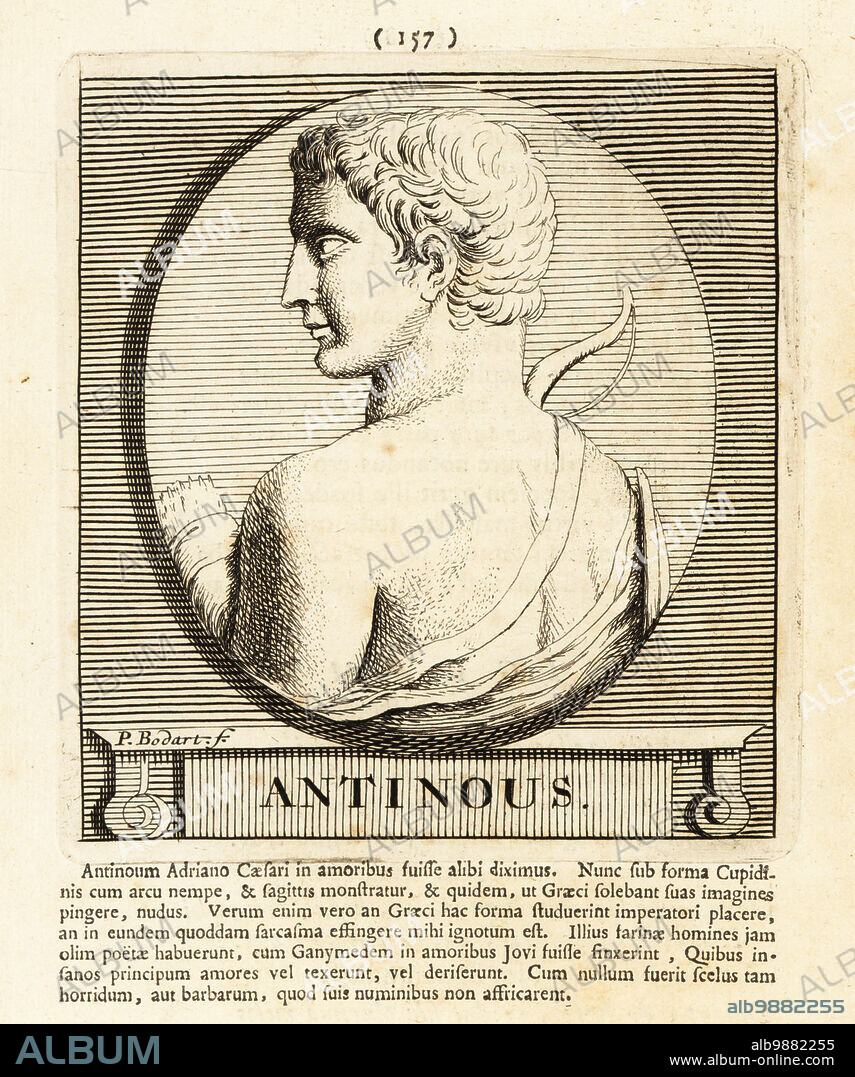alb9882255
Antinous, son of Eupeithes, prominent suitor of Penelope in Homer's Odyssey. The first to be killed by Odysseus when he returns to his palace. Shown with bow, quiver of arrows. Copperplate engraving by Pieter Bodart (1676-1712) from Henricus Spoors Deorum et Heroum, Virorum et Mulierum Illustrium Imagines Antiquae Illustatae, Gods and Heroes, Men and Women, Illustrated with Antique Images, Petrum, Amsterdam, 1715. First published as Favissæ utriusque antiquitatis tam Romanæ quam Græcæ in 1707. Henricus Spoor was a Dutch physician, classical scholar, poet and writer, fl. 1694-1716.

|
Zu einem anderen Lightbox hinzufügen |
|
Zu einem anderen Lightbox hinzufügen |



Haben Sie bereits ein Konto? Anmelden
Sie haben kein Konto? Registrieren
Dieses Bild kaufen

Untertitel:
Siehe automatische Übersetzung
Antinous, son of Eupeithes, prominent suitor of Penelope in Homer's Odyssey. The first to be killed by Odysseus when he returns to his palace. Shown with bow, quiver of arrows. Copperplate engraving by Pieter Bodart (1676-1712) from Henricus Spoors Deorum et Heroum, Virorum et Mulierum Illustrium Imagines Antiquae Illustatae, Gods and Heroes, Men and Women, Illustrated with Antique Images, Petrum, Amsterdam, 1715. First published as Favissæ utriusque antiquitatis tam Romanæ quam Græcæ in 1707. Henricus Spoor was a Dutch physician, classical scholar, poet and writer, fl. 1694-1716.
Bildnachweis:
Album / Florilegius
Freigaben (Releases):
Model: Nein - Eigentum: Nein
Rechtefragen?
Rechtefragen?
Bildgröße:
5254 x 6290 px | 94.6 MB
Druckgröße:
44.5 x 53.3 cm | 17.5 x 21.0 in (300 dpi)
Schlüsselwörter:
 Pinterest
Pinterest Twitter
Twitter Facebook
Facebook Link kopieren
Link kopieren Email
Email
